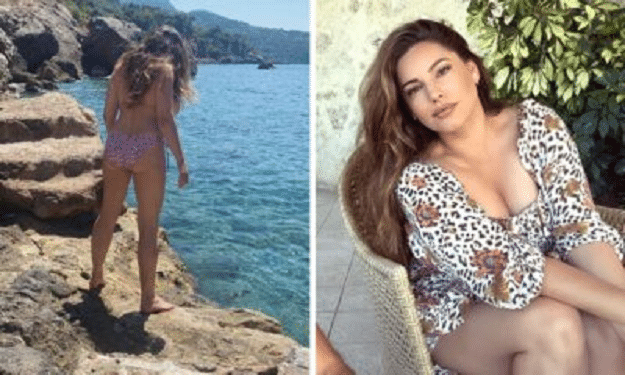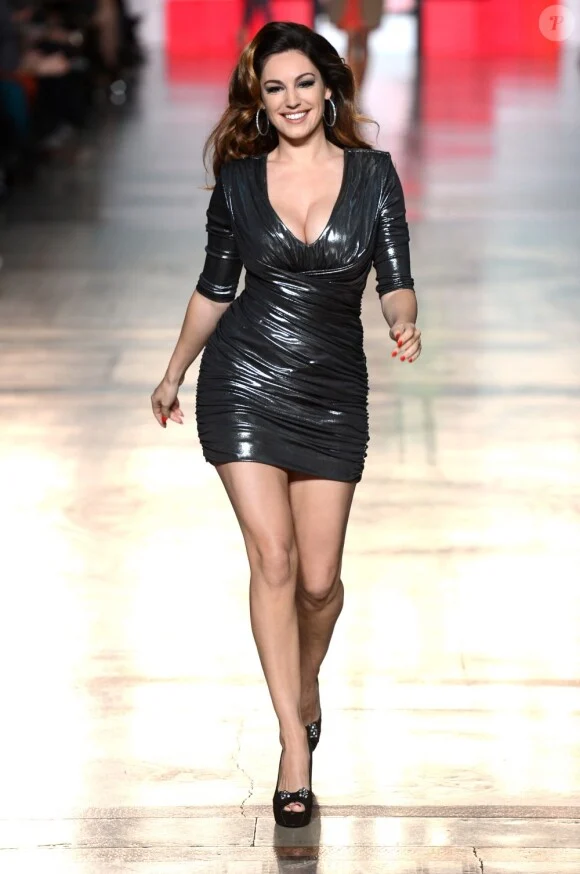
Beauty standards have always been influenced by culture, media, and societal expectations. However, a groundbreaking scientific study is now challenging traditional ideas of attractiveness. Researchers have revealed that a 43-year-old model with a curvier, fuller figure might actually represent the “ideal body.” Let’s explore what this study means and how it reflects the evolving perceptions of beauty today.
Beauty standards are never static; they shift with the times, reflecting the cultural trends and societal norms of each era. In the mid-20th century, Marilyn Monroe’s curvy, hourglass figure epitomized beauty. Fast forward to the 1990s, and the fashion industry favored the waif-like frames of supermodels like Kate Moss.
Now, we find ourselves in an era where diversity is becoming the new standard. This recent study from Texas University takes things a step further by redefining what many have long considered the “ideal” figure. It suggests that beauty is far more inclusive than previously thought.
The study identifies an “ideal body” with a BMI of 18.85 and specific measurements for bust, waist, and hips. What’s interesting is how closely these measurements align with those of British model Kelly Brook, whose figure is fuller and curvier compared to traditional runway models.
Kelly Brook has long been admired for her natural beauty, but her proportions differ from the extreme thinness often celebrated in high fashion. This study validates her body type, suggesting it embodies health, symmetry, and attractiveness in a way that challenges outdated norms.
For decades, mainstream beauty standards revolved around slim and often unattainable body types. However, the findings of this study highlight a growing preference for fuller, curvier figures. These figures represent a sense of vitality and femininity that resonates with a broader audience.

This shift is particularly refreshing because it aligns with a movement toward body positivity. Unlike the rigid ideals of the past, the study presents a figure that feels more natural, achievable, and relatable. It’s a reminder that beauty can be healthy, confident, and unapologetically unique.
It’s important to note that while the study identifies an “ideal body type,” beauty is inherently subjective. Everyone has their own preferences, shaped by cultural background, personal experiences, and societal influences. What one person finds attractive may not resonate with someone else—and that’s perfectly okay.
This research isn’t about devaluing other body types. It’s about broadening the conversation and challenging the long-standing notion that thinness is the ultimate standard of beauty. It’s a celebration of diversity and a call to appreciate the myriad ways that beauty manifests itself in our world.

In recent years, the fashion and entertainment industries have taken significant steps toward inclusivity. Models like Ashley Graham have paved the way for body positivity by proving that beauty comes in all shapes and sizes. Campaigns celebrating diversity, whether it’s in skin tone, body type, or age, are helping to reshape outdated ideals.
This inclusivity matters. It sends a powerful message to individuals who have felt excluded or undervalued because they didn’t fit into a narrow definition of beauty. The study’s findings reinforce the idea that beauty is multifaceted and deeply personal. The more we embrace this, the closer we get to a society where everyone feels seen and celebrated.

The findings of this study spark an important conversation about beauty and societal expectations. By redefining the “ideal body,” it challenges us to rethink how we view attractiveness. Beauty is not confined to a single set of measurements or proportions—it thrives in diversity and individuality.
This is a powerful reminder that true beauty lies in confidence and authenticity. It’s about embracing who you are, imperfections and all, and celebrating the unique qualities that make you stand out. Beauty isn’t about fitting into a mold; it’s about breaking free from it.
The study from Texas University offers a refreshing perspective on beauty by challenging outdated ideals. While it identifies a specific “ideal” body type, it also encourages us to celebrate diversity and individuality. Beauty is not one-dimensional, and there’s no single standard of perfection.
As society continues to evolve, so too must our understanding of attractiveness. Let’s move beyond superficial standards and focus on what truly matters—confidence, self-expression, and authenticity. After all, beauty is most powerful when it reflects the uniqueness of the individual.